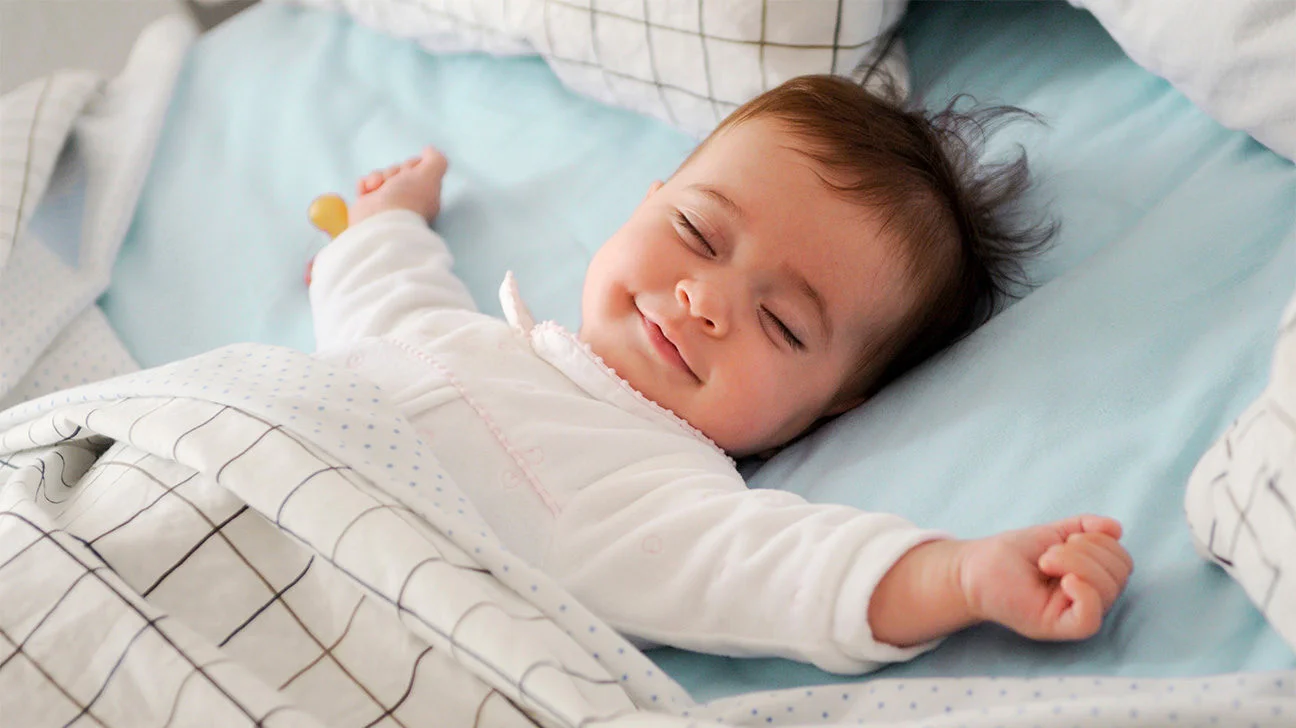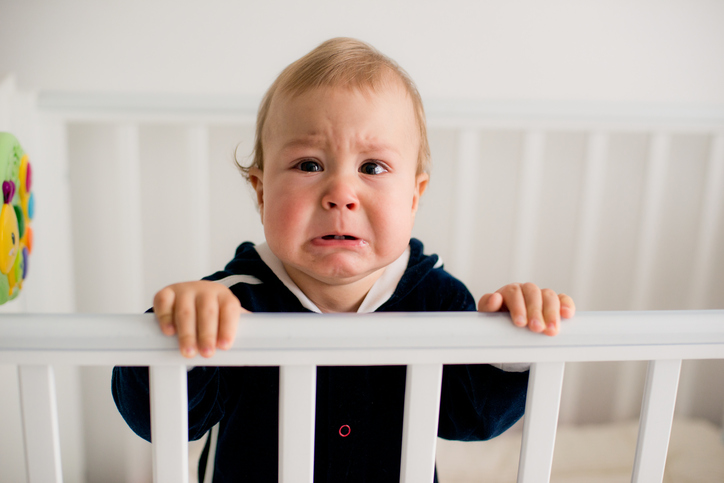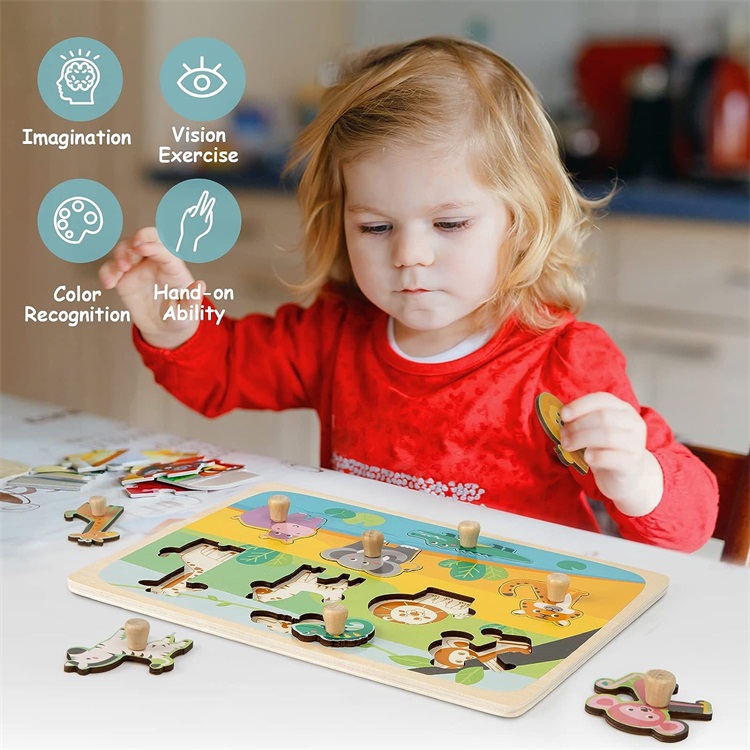What Babies Learn From Bubble Play
Visual tracking skills: Bubbles are an excellent way to help your baby or toddlers developing visual skills. We are not born with the visual skills we need for learning, including the skills to fix, follow, track, focus, converge, diverge and so on. These skills need to develop over time. How well your baby develops her visual skills, from the earliest months of life, will help her learn now as well as later at school. Because bubbles are both eye catching and slow moving they are a great way to help your little one learn to use her eyes and develop these skills. Access online activities to help your baby’s visual development here.
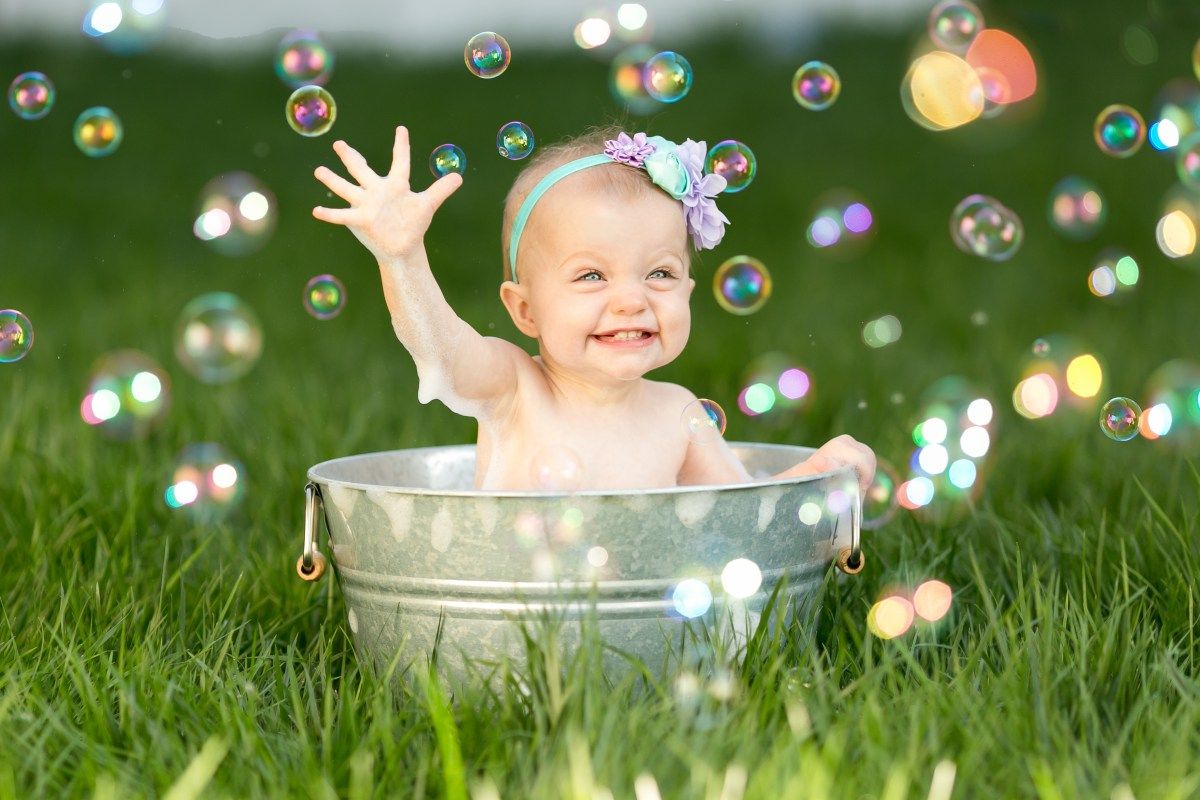
Gross motor movement, balance and muscle tone development: For little babies, bubbles are a fun tummy time activity and every bit of happy tummy time helps with development! In this position bubbles also encourage head turning – right, left, up and down, movements that are needed to help control primitive reflexes, so important for future smooth, coordinated movement and learning. Learn all about about primitive reflexes and why parents need to know about them here.Once your baby gets stronger on his tummy, he will start to reach out for the bubbles. Think of all the muscle strengthening and balance development going on as he attempts this!
Bubbles also provide motivation to move. I’ve seen many a baby make their first forward movements, determined to get to that bubble on the floor.
As your growing baby starts to crawl, creep and cruise he will thoroughly enjoy chasing after bubbles. Crawling over, under or through obstacles to get to the bubbles encourages further development of muscle tone, body and space awareness and problem solving for your baby.
When your little one is learning to stand and walk independently, bubbles again provide many opportunities to work on developing muscle tone and balance as he moves after the bubbles; starting, stopping, changing direction, shifting his weight, reaching up and squatting up and down.
Fine motor development: Once your child can grasp, he will want to hold the wand. It does get messy, but any practice at grasping, holding and manipulating the wand in and out of the container helps the development of fine motor control, important for the development of the correct pencil grip, writing and working with tools in the future. Give him plenty of opportunity to do this with both the left and the right hands: Read why this is important here: When will my baby become left or right handed.

Hand-eye and foot-eye coordination: Popping the bubbles, be it with the whole hand, two hands, a finger, a foot or a toe all involve the development of hand-eye or foot-eye coordination. These early movement experiences form the basic building blocks of the catching, hitting, throwing and kicking skills involved in ball sports. Access more baby hand-eye coordination activities here.
Oral-motor skills: Once old enough, help your little one to learn to blow the bubbles himself. Blowing is good exercise for the developing muscles in the jaw and mouth. Learning to blow bubbles isn’t as easy as it seems and it may take a while to work it all out. Sucking in instead of blowing out is fairly common to start with but he will eventually get the hang of it and how to use the correct amount of force when he blows.
Speech, hearing and language development: Playing with bubbles provides many good opportunities for the development of speech, hearing and language. The early speech sounds of ‘buh’ in bubble and ‘puh’ in pop are naturally used and imitation encouraged during bubble play. As your child grows, bubbles provide many opportunities to encourage developing language skills as you talk about the bubbles being; big, small, wet, slimy and how they are moving; fast, slow etc. Access more baby speech and hearing activities here.
Body awareness: Knowing where my body parts are and how they can move, is such an important foundation building block for all later learning. The better your child’s body awareness the better she will do. Bubbles provide endless opportunity to talk and learn about body parts: “Look, the bubble is near your hand.” “Stomp on it with your foot.” “Arms up. Try to touch the bubbles!” Accesss more baby body awareness activities here.
Spatial awareness and directionality: Developing an awareness of how their body can move in space and understanding directional concepts develops alongside body awareness. Bubble play can encourage the understanding of concepts such as; up, down, over, under, in front, behind, next to, above and below. For example: “Look up! There’s a bubble above your head!” You can never start using these directional concepts too early with your little one and the more you do, the better for developing spatial awareness and directionality.
Social and communication skills: Bubbles are wonderful for groups, be they siblings, baby friends or your class at GymbaROO / KindyROO. The fun is infectious! In groups children further develop body and space awareness as they learn to move around and pop the bubbles without bumping into each other!
Whether actively interacting or simply lying down and watching them float around, bubbles are a magnificent and magical way to help development and enjoy the moment.
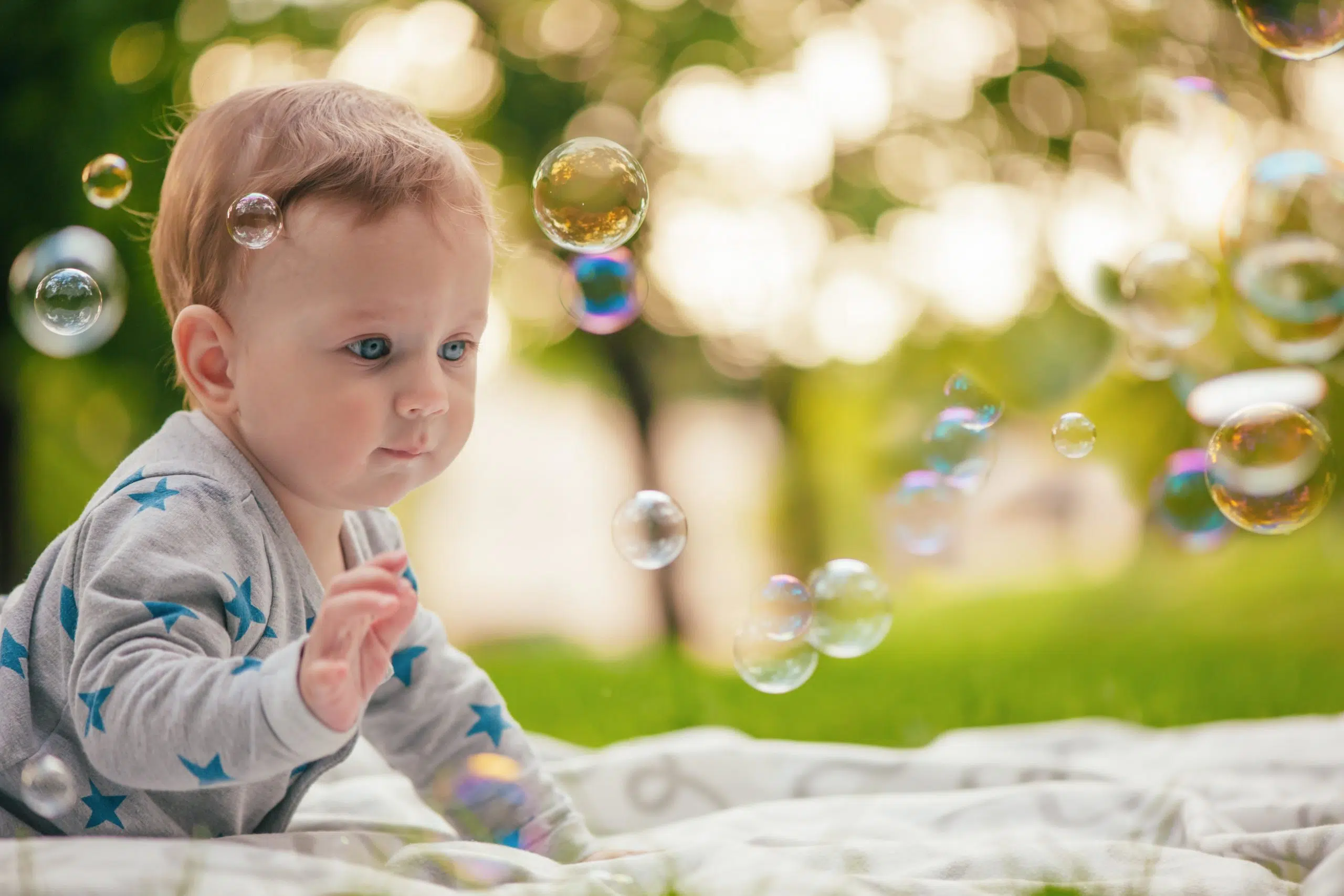
Bubble play activities for babies
If your baby needs extra support in the tummy time position, place a rolled towel or cushion under the chest to help her lift her head.
- Tummy time fun! Place a shallow pan of water in front of your baby and blow the bubbles up and towards the pan. Some bubbles will land and stay in the water before popping. Blow these around gently. You can also place some bubble liquid in the water and blow through a straw to create a growing mountain of bubbles. More tummy time activities here.
- Spend time together on your tummies watching the bubbles fall to the ground. Try catching a bubble on your wand then let your baby reach to pop it. He’ll be able to do this before he develops the ability to reach out and pop a moving bubble.
- When sitting, be it leaning against you, independently on the floor or in the high chair, encourage pointing to the bubbles, leading to grabbing, catching or popping them with a clap!
Bubble play activities for crawlers, creepers and toddlers
- Leave a large bubble wand and/or a tightly sealed container of bubbles where your older, mobile baby or toddler can safely reach them. This way he can let you know whenever he is ready for some bubble fun.
- Once crawling, creeping and walking he will love to chase after the bubbles and pop them in the air or on the floor. Provide extra sensory input by doing this across all sorts of safe surfaces; carpet, floorboards, grass, sand etc. Access more crawling activities here.
- Safely arrange obstacles for your crawler or toddler to move over or under to get to the bubbles, for example; cushions, pillows, tunnels and chairs.
Bubbles are great fun at bath time, though be careful, as it can get slippery! Bubbles will sit on wet skin for longer before popping. Blow the bubbles onto your little one’s body and name the body parts they land on. - Older babies and toddlers love trying to hit the bubbles with a fly swatter. Start with the ones that land on the ground.
Recipe for non-toxic, natural bubble mixture
Mix together: 1 cup water, 1 table spoon glycerin, 1/4 cup natural, biodegradable dish detergent.
Safety notes for playing with bubbles
- Make sure the wand is not a size that babies or children can choke on.
- Use a child friendly, non-toxic bubble mixture (see above).
- Ensure that no soap gets in your child’s eyes.
- Be sure to make learning fun! Come back to it if your baby is not in the mood.
- Never leave your baby unattended with any toy or activity.
Post a Comment
You must be logged in to post a comment.


